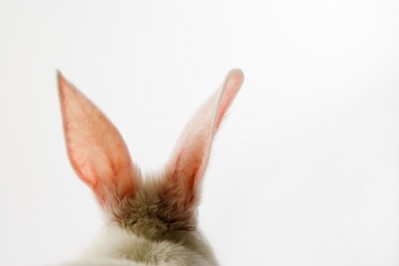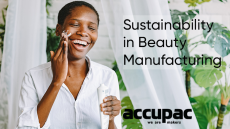Q&A: CDU interviews Lush Prize 2024 winner Emily R. Trunnell, Ph.D.

In an industry where innovation and ethics are often intertwined, the cosmetics and personal care sector remains a crucial sector for innovation in humane and effective research methodologies. Last week, cosmetics company Lush announced the winners of its prestigious Lush Prize, which supports initiatives to end or replace animal testing.
The Lush Prize has five main prize categories: Science, Training, Public Awareness, Lobbying, and Young Researcher, and the winners from each category split £250,000, which is the largest prize fund in the non-animal testing sector. The Lush Prize also includes three categories of Recognition Awards for Political Achievement, Major Science Collaboration, and the Andrew Tyler Award for outstanding contribution towards ending animal testing.
To learn more about the crucial work being done to advance non-animal testing methods, we spoke with Dr. Emily Trunnell, Director of Science Advancement and Outreach at People for the Ethical Treatment of Animals (PETA). Dr. Trunnell is a member of the Coalition to Illuminate and Address Animal Methods Bias (COLAAB), who won the 2024 Lush Prize's Major Science Collaboration Recognition Award for their work in exposing and dismantling “animal methods bias” in scientific publishing. The award acknowledges outstanding "international collaborations looking to develop non-animal techniques or approaches more widely and in the longer term," as detailed on Lush's website.
As detailed in PETA's press release announcing the win, "the coalition—through peer-reviewed research, workshops, presentations, and more—showed that the prevailing scientific bias favors the antiquated convention of using animals in experiments, despite the availability of perfectly workable non-animal research methods."
We interviewed Dr. Trunnell for her insights into the advancements in non-animal testing, the importance of addressing systemic biases in scientific research, and the future direction of humane and innovative research practices.
CDU: Congratulations on the Lush Prize! Can you tell us what this award means to you personally and to PETA’s mission?
Emily Trunnell, Ph.D. (ET): It is the dream of anyone working to advance non-animal methods to win a Lush Prize, the largest prize fund in the non-animal testing sector. PETA and I are honored to receive this recognition, as it allows us to spread awareness about our work and have a greater impact.
The topic of animal methods bias is particularly close to my heart. When I was in graduate school, my mentor told me that I should do experiments on animals because those would have a greater chance to be published in scientific journals.
I did so, trusting his advice. This led to me conducting painful and deadly experiments on mice and rats.
As I grew as a scientist, I came to realize how poorly regulated and unscientific these types of experiments really are. When I finished my Ph.D., I came to work for PETA to change this paradigm. While I wish it didn’t have to happen this way for me and that I was instead encouraged to use non-animal methods from the start, I’m glad I can now use my experience to help animals and improve science.
CDU: Can you explain what “animal methods bias” in scientific publishing entails and why it’s such a significant issue?
ET: We’ve defined animal methods bias as a preference for animal-based methods where they may not be necessary or where non-animal methods may already be suitable. In simpler terms, researchers who use perfectly legitimate non-animal methods are sometimes asked to add animal experiments to a study simply because another scientist is more familiar with or prefers animal-based methods.
It is a systemic issue that can affect all areas where research is assessed, from getting research funded, to publishing papers, to being assessed for career development. This means that researchers who use non-animal methods can be at a disadvantage if they choose not to use animals: they may be passed over for funding and their papers may be rejected from journals. These factors can cause negative career consequences. It also means that experiments on animals are perpetuated in science and it disincentives their replacement.
CDU: What specific contributions did you and the COLAAB make to earn the 2024 LUSH Prize?
ET: The Coalition to Illuminate and Address Animal Methods Bias (COLAAB) was the first to define animal methods bias and give this phenomenon, which was previously only anecdotal, a globally recognized name and dedicated task force. We have chaired sessions on animal methods bias at scientific conferences, held two workshops and a webinar, published five peer-reviewed papers, submitted two public comments to the U.S. National Institutes of Health (NIH) and have ongoing studies which will demonstrate where this bias exists and its impact on science.
I’ve been involved with the COLAAB its inception in 2022 and am a member of the Mitigation Working Group, where we focus on turning the group’s findings into practice by engaging with publishers, journal editors, peer reviewers, funders, early-career researchers, government agencies, and the scientific community. Our first deliverable was the Author Guide for Addressing Animal Methods Bias, a toolkit for researchers to use in study design, when preparing and submitting their papers, and during the peer review process to prevent and address animal methods bias when it occurs. I’ve also recently conducted a study demonstrating the possibility of animal methods bias in the funding of neuroscience research by the National Institutes of Health, which I look forward to publishing soon.
The COLAAB is the first winner of Lush’s Major Science Collaboration prize, which we are so happy about because the collaborative aspect of the COLAAB is itself a major achievement. COLAAB members join from across the globe (Belgium, Canada, Germany, Spain, United States, and United Kingdom) and sectors: Johns Hopkins Bloomberg School of Public Health, Center for Alternatives to Animal Testing, Berlin Institute of Health at Charité, York St. John University, Utrecht University, the Physicians Committee for Responsible Medicine, Humane Society International, PETA, Fund for the Replacement of Animals in Medical Experiments, and Safer Medicines Trust.
CDU: You mentioned that the prevailing bias favors animal testing despite the availability of non-animal methods. Can you give examples of some of these non-animal testing methods?
ET: Non-animal testing methods are so exciting. I love to talk about them! There are many ways in which scientists can now use human cells, tissue, and data to better understand and develop treatments for human health conditions.
These are not only more ethical, but translate better to human use, since they don’t have to jump the species hurdle from mouse, dog, or monkey to human. One example is the organ-on-a-chip. These organ-chips are small devices the size of a computer memory stick that contain living human cells in a clear, flexible three-dimensional environment.
They can provide a window into the inner workings of human tissues and organs and the effects that drugs can have on them. There are now organ-chips for almost any every area of disease research and scientists can even link different organ-chips together into interacting organ and tissue systems. Other examples include human organoids (a 3D improvement on traditional petri dish cell culture), computer modeling including AI technology, harnessing of human “omics” data, advanced imaging techniques, and more.
CDU: How did the COLAAB go about exposing and dismantling this bias through their work?
ET: In addition to naming this bias and bringing awareness to it, the COLAAB has engaged with stakeholders across the research process to determine what kind of evidence is needed to convince decision makers that this is an important issue to address. We’ve conducted studies (some published and more soon-to-be published) to provide this evidence and we continue to engage with the publishing and funding sectors to implement mitigation measures on animal methods bias.
CDU: What challenges do researchers face when trying to publish studies that use non-animal methods, and how does this bias impact scientific progress?
ET: When researchers using non-animal methods apply for grants or submit a paper for publication, they are often faced with reviewers who are either unfamiliar with their methods or otherwise have a biased preference for experiments on animals. These reviewers may provide unfair assessments and sometimes even request that the researcher add animal experiments to their study plan or paper.
Some researchers, faced with these requests and the immense pressures to publish their work and secure funding, may comply simply to be permitted to move ahead. Adding animal experiments to a study can increase costs and delay research progress. Researchers who refuse these requests or who receive unfairly negative reviewer comments may face having their grant application or paper rejected.
Most importantly, this means that fewer studies using exclusively non-animal methods are approved and published, which delays their acceptance into the scientific mainstream. We are left with the continued proliferation of animal experiments that are poorly translatable to the human condition when we could have advanced human-relevant research methods instead.
CDU: Can you elaborate on the psychological and physical impacts on animals used in traditional testing methods?
ET: Animals who are held and used in laboratories are denied everything that is meaningful and important to them. All they can do is sit and wait in fear of the next terrifying and painful procedure that will be performed on them. A lack of environmental enrichment and the stress of their living situations cause some animals to develop neurotic behaviors, such as incessantly spinning in circles, rocking back and forth, pulling out their own fur, and even biting themselves. After enduring lives of pain, loneliness, and terror, almost all of them will be killed.
More than 110 million animals suffer and die in the U.S. every year in chemical, drug, food, and cosmetics tests. They also experience this fate in medical training exercises, curiosity-driven experiments at universities, classroom biology experiments, and dissection even though modern, non-animal methods have repeatedly been shown to be more effective. The use of animals in experiments is one of PETA’s major priorities.
CDU: What are some key recommendations from the Author Guide for Addressing Animal Methods Bias in Publishing? How can researchers use this guide effectively?
ET: The COLAAB’s Author Guide can assist researchers using non-animal methods at every stage of the process, from study design to final publication. We’ve provided preventative tools, including a repository of human-based models and datasets that can be added to studies or used to validate findings without using animals, a bibliography of papers and policies that they can cite, information on pre-registering a study plan, and suggestions for properly preparing a manuscript. The Author Guide also helps researchers to select the best journal and reviewers for their work and provides a flowchart and suggested language for responding to reviewers who do request animal experiments.
CDU: For early-career researchers, what advice would you give to encourage the use of non-animal methods despite the perceived career risks? And what message do you have for other scientists and researchers who are hesitant to move away from animal testing?
ET: Early career researchers are the future of our scientific workforce. We’ve seen that young researchers are more interested in training in and pursuing non-animal research, but that they often lack the mentorship and support to make this possible. In my division of PETA, Science Advancement and Outreach, we offer guidance to students in these positions to empower them with the evidence they need to make the case for non-animal methods to their supervisors or help them seek the right laboratories to join.
We’ve also advocated for NIH to invest more in non-animal methods training and education, both for early-career researchers and those in later stages who would like to make the switch. I think it’s especially challenging for researchers with established laboratories to be motivated to move in another direction. These are folks who’ve expended considerable resources in setting up their research to use animals and switching to other technologies requires them to invest time and money in training, tools, and infrastructure, so funding agencies must provide support to make this happen. I would encourage early career researchers, especially, to stay strong in their insistence on non-animal methods and, in time, we’ll see that they were on the right side of history all along.
CDU: How does the Coalition plan to continue its efforts to promote non-animal testing methods in the future?
ET: The next steps for the COLAAB are to publish the additional evidence we’ve generated demonstrating animal methods bias in publishing and funding, take on more projects like these, and to use these findings to advance policy towards greater acceptance of non-animal methods and fair research assessment. Soon, we’ll also be preparing the proceedings from a workshop we held on May 16 exploring animal methods bias in biomedical research funding and we look forward to sharing these great conversations with the research community and continuing the discussion.
CDU: How can the public contribute to and support the movement towards non-animal testing in scientific research?
ET: If you’re in the U.S., there’s a simple action you can take to tell your legislators that you want our nation’s investment in research move towards non-animal methods and away from animal use. This is what we call for in our Research Modernization Deal. Of course, please share and talk about PETA’s work on animal testing and the work of the COLAAB with people you know so we can continue to advance this life-saving work.
CDU: Looking ahead, what are your hopes and goals for the future of non-animal testing methods in scientific research?
ET: Science is moving in the direction of non-animal methods. I’m confident that these methods will continue to be implemented and developed and will keep providing the critical data we need to better understand and treat human health conditions. What needs to change is that existing systems, like policy and regulations, must get up to speed with the science.
This will require greater investment in these methods, addressing systemic biases like animal methods bias, disincentivizing animal experiments, and for leadership in research to take a clear stance in favor of non-animal methods. Public polls have demonstrated that the proportion of people against animal testing is steadily growing. When you couple that with all the new technologies that can replace it, I have high hopes for the future.
















